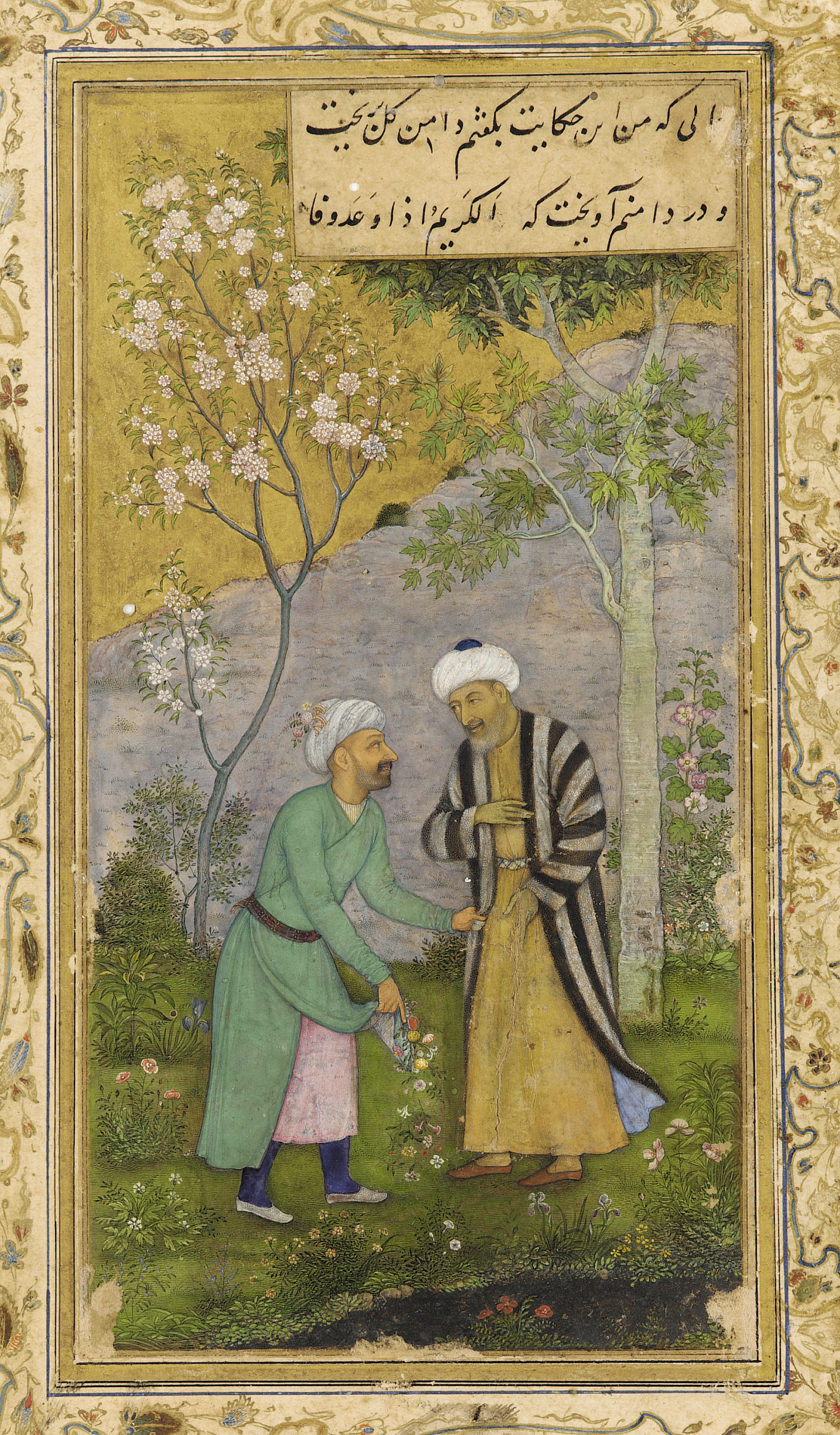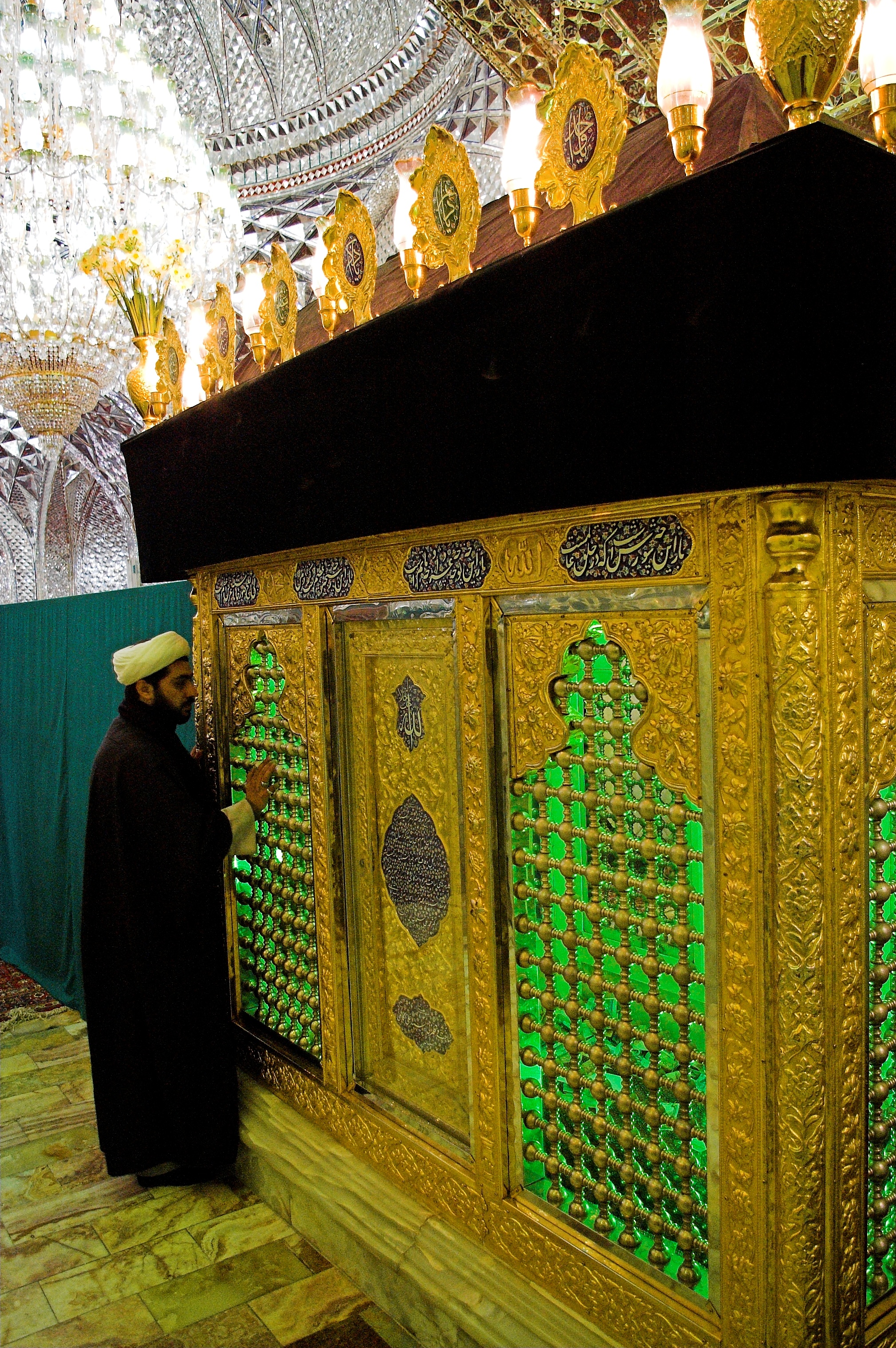|
Derwish
Dervish, Darvesh, or Darwīsh (from fa, درویش, ''Darvīsh'') in Islam can refer broadly to members of a Sufi fraternity (''tariqah''), or more narrowly to a religious mendicant, who chose or accepted material poverty. The latter usage is found particularly in Persian and Turkish (''derviş'') as well as in Amazigh (''Aderwish''), corresponding to the Arabic term '' faqīr''. Their focus is on the universal values of love and service, deserting the illusions of ego (''nafs'') to reach God. In most Sufi orders, a dervish is known to practice ''dhikr'' through physical exertions or religious practices to attain the ecstatic trance to reach God. Their most popular practice is Sama, which is associated with the 13th-century mystic Rumi. In folklore and with adherents of Sufism, dervishes are often credited with the ability to perform miracles and ascribed supernatural powers. Historically, the term Dervish has also been used more loosely, as the designation of various Islamic ... [...More Info...] [...Related Items...] OR: [Wikipedia] [Google] [Baidu] |
Rumi
Jalāl al-Dīn Muḥammad Rūmī ( fa, جلالالدین محمد رومی), also known as Jalāl al-Dīn Muḥammad Balkhī (), Mevlânâ/Mawlānā ( fa, مولانا, lit= our master) and Mevlevî/Mawlawī ( fa, مولوی, lit= my master), but more popularly known simply as Rumi (30 September 1207 – 17 December 1273), was a 13th-century PersianRitter, H.; Bausani, A. "ḎJ̲alāl al-Dīn Rūmī b. Bahāʾ al-Dīn Sulṭān al-ʿulamāʾ Walad b. Ḥusayn b. Aḥmad Ḵh̲aṭībī." Encyclopaedia of Islam. Edited by: P. Bearman, Th. Bianquis, C.E. Bosworth, E. van Donzel and W.P. Heinrichs. Brill, 2007. Brill Online. Excerpt: "known by the sobriquet Mewlānā, persian poet and founder of the Mewlewiyya order of dervishes" poet, Hanafi faqih, Islamic scholar, Maturidi theologian and Sufi mystic originally from Greater Khorasan in Greater Iran. Rumi's influence transcends national borders and ethnic divisions: Iranians, Tajiks, Turks, Greeks, Pashtuns, other C ... [...More Info...] [...Related Items...] OR: [Wikipedia] [Google] [Baidu] |
Mevlevi
The Mevlevi Order or Mawlawiyya ( tr, Mevlevilik or Mevleviyye; fa, طریقت مولویه) is a Sufi order that originated in Konya (a city now in Turkey; formerly capital of the Seljuk Sultanate) and which was founded by the followers of Jalaluddin Muhammad Balkhi Rumi, a 13th-century Persian poet, Sufi mystic, and Islamic theologian. The Mevlevis are also known as the "whirling dervishes" due to their famous practice of whirling while performing ''dhikr'' (remembrance of God). Dervish is a common term for an initiate of the Sufi path; whirling is part of the formal sema ceremony and the participants are properly known as ''semazens''. , headquarters = Konya, Turkey , founder = Veled , founding_location = Seljuk Sultanate , type = Dervish Order , membership = ca. 2,000 as of 2015 , leader_title = Makam Chalabi (Chief Master) , leader_name = Faruk Hemdem , leader_title2 = Wali , leader_name2 = ... [...More Info...] [...Related Items...] OR: [Wikipedia] [Google] [Baidu] |
Sufi Whirling
Sufi whirling (or Sufi turning) ( tr, Semazen borrowed from Persian Sama-zan, Sama, meaning ''listening'', from Arabic, and zan, meaning doer, from Persian) is a form of physically active meditation which originated among certain Sufi groups, and which is still practiced by the Sufi Dervishes of the Mevlevi order and other orders such as the Rifa'i-Marufi. It is a customary meditation practice performed within the sema, or worship ceremony, through which dervishes (also called ''semazens'', from Persian ) aim to reach the source of all perfection, or dharma. This is sought through abandoning one's nafs, ego or personal desires, by listening to the music, focusing on God, and spinning one's body in repetitive circles, which has been seen as a symbolic imitation of planets in the Solar System orbiting the sun. The Mevlevi practice gave rise to an Egyptian form, ''tanoura'', distinguished by the use of a multicolored skirt. This has also developed into a performance dance by non-S ... [...More Info...] [...Related Items...] OR: [Wikipedia] [Google] [Baidu] |
Masnavi
The ''Masnavi'', or ''Masnavi-ye-Ma'navi'' ( fa, مثنوی معنوی), also written ''Mathnawi'', or ''Mathnavi'', is an extensive poem written in Persian by Jalal al-Din Muhammad Balkhi, also known as Rumi. The ''Masnavi'' is one of the most influential works of Sufism, ascribed to be like a "Quran in Persian". It has been viewed by many commentators as the greatest mystical poem in world literature. The ''Masnavi'' is a series of six books of poetry that together amount to around 25,000 verses or 50,000 lines.Allamah Mohamad Taghi Jafari, ''Tafsir Masnavi''Karim Zamani, ''Tafsir Masnavi Ma'navi'' It is a spiritual text that teaches Sufis how to reach their goal of being truly in love with God. General description The title ''Masnavi-ye-Ma'navi'' ( fa, مثنوی معنوی) means "The Spiritual Couplets". The Masnavi is a poetic collection of anecdotes and stories derived from the Quran, hadith sources, and everyday tales. Stories are told to illustrate a point and each mo ... [...More Info...] [...Related Items...] OR: [Wikipedia] [Google] [Baidu] |
Gulistan Of Sa'di
''Gulistān'' ( fa, گُلِستان, Golestān, The Flower Garden; ), sometimes spelled Golestan, is a landmark of Persian literature, perhaps its single most influential work of prose. Written in 1258 CE, it is one of two major works of the Persian poet Sa'di, considered one of the greatest medieval Persian poets. It is also one of his most popular books, and has proved deeply influential in the West as well as the East. The ''Golestan'' is a collection of poems and stories, just as a flower-garden is a collection of flowers. It is widely quoted as a source of wisdom. The well-known aphorism still frequently repeated in the western world, about being sad because one has no shoes until one meets the man who has no feet "whereupon I thanked Providence for its bounty to myself" is from the ''Golestan''. The minimalist plots of the ''Golestans stories are expressed with precise language and psychological insight, creating a "poetry of ideas" with the concision of mathematical for ... [...More Info...] [...Related Items...] OR: [Wikipedia] [Google] [Baidu] |
Saadi (poet)
Saadi Shīrāzī ( fa, ابومحمّد مصلحالدین بن عبدالله شیرازی), better known by his pen name Saadi (; fa, سعدی, , ), also known as Sadi of Shiraz (, ''Saʿdī Shīrāzī''; born 1210; died 1291 or 1292), was a Persian poet and prose writer of the medieval period. He is recognized for the quality of his writings and for the depth of his social and moral thoughts. Saadi is widely recognized as one of the greatest poets of the classical literary tradition, earning him the nickname "The Master of Speech" or "The Wordsmith" ( ''ostâd-e soxan'') or simply "Master" ( ''ostâd'') among Persian scholars. He has been quoted in the Western traditions as well. '' Bustan'' has been ranked as one of the 100 greatest books of all time by ''The Guardian''. Biography Saadi was born in Shiraz, Iran, according to some, shortly after 1200, according to others sometime between 1213 and 1219. In the Golestan, composed in 1258, he says in lines evidently addr ... [...More Info...] [...Related Items...] OR: [Wikipedia] [Google] [Baidu] |
Qadiriyya
The Qadiriyya (), also transliterated Qādirīyah, ''Qadri'', ''Qadriya'', ''Kadri'', ''Elkadri'', ''Elkadry'', ''Aladray'', ''Alkadrie'', ''Adray'', ''Kadray'', ''Kadiri'', ''Qadiri'', ''Quadri'' or ''Qadri'' are members of the Sunni Qadiri tariqa (Sufi order). The tariqa got its name from Abdul Qadir Gilani (1077–1166, also transliterated ''Jilani''), who was a Hanbali scholar from Gilan, Iran. The order relies strongly upon adherence to the fundamentals of Sunni Islamic law. The order, with its many offshoots, is widespread, particularly in the non-Arabic-speaking world, and can also be found in Turkey, Indonesia, Afghanistan, India, Bangladesh, Pakistan, the Balkans, Russia, Palestine, China, Gladney, Dru "Muslim Tombs and Ethnic Folklore: Charters for Hui Identity"''Journal of Asian Studies'', August 1987, Vol. 46 (3): 495-532; pp. 48-49 in the PDF file. and East and West Africa. History The founder of the Qadiriyya, Abdul Qadir Gilani, was a scholar and preacher. Ha ... [...More Info...] [...Related Items...] OR: [Wikipedia] [Google] [Baidu] |
Mullah
Mullah (; ) is an honorific title for Shia and Sunni Muslim clergy or a Muslim mosque leader. The term is also sometimes used for a person who has higher education in Islamic theology and sharia law. The title has also been used in some Mizrahi and Sephardic Jewish communities to refer to the community's leadership, especially religious leadership. Etymology The word ''mullah'' is derived from the Arabic word ''mawlā'' ( ar, مَوْلَى), meaning "vicar", "master" and "guardian". Usage Historical usage The term has also been used among Persian Jews, Bukharan Jews, Afghan Jews, and other Central Asian Jews to refer to the community's religious and/or secular leadership. In Kaifeng, China, the historic Chinese Jews who managed the synagogue were called "mullahs". Modern usage It is the term commonly used for village or neighborhood mosque leaders, who may not have high levels of religious education, in large parts of the Muslim world, particularly Iran, Turkey, ... [...More Info...] [...Related Items...] OR: [Wikipedia] [Google] [Baidu] |
Avestan
Avestan (), or historically Zend, is an umbrella term for two Old Iranian languages: Old Avestan (spoken in the 2nd millennium BCE) and Younger Avestan (spoken in the 1st millennium BCE). They are known only from their conjoined use as the scriptural language of Zoroastrianism, and the Avesta likewise serves as their namesake. Both are early Eastern Iranian languages within the Indo-Iranian language branch of the Indo-European language family. Its immediate ancestor was the Proto-Iranian language, a sister language to the Proto-Indo-Aryan language, with both having developed from the earlier Proto-Indo-Iranian language; as such, Old Avestan is quite close in both grammar and lexicon to Vedic Sanskrit, the oldest preserved Indo-Aryan language. The Avestan text corpus was composed in the ancient Iranian satrapies of Arachosia, Aria, Bactria, and Margiana, corresponding to the entirety of present-day Afghanistan as well as parts of Tajikistan, Turkmenistan, and Uzbekistan. The ... [...More Info...] [...Related Items...] OR: [Wikipedia] [Google] [Baidu] |
Proto-Iranian
Proto-Iranian or Proto-Iranic is the reconstructed proto-language of the Iranian languages branch of Indo-European language family and thus the ancestor of the Iranian languages such as Pashto, Persian, Sogdian, Zazaki, Ossetian, Mazandarani, Kurdish, Talysh and others. Its speakers, the hypothetical Proto-Iranians, are assumed to have lived in the 2nd millennium BC and are usually connected with the Andronovo archaeological horizon (see Indo-Iranians). Proto-Iranian was a satem language descended from the Proto-Indo-Iranian language, which in turn, came from the Proto-Indo-European language. It was likely removed less than a millennium from the Avestan language, and less than two millennia from Proto-Indo-European. Dialects Skjærvø postulates that there were at least four dialects that initially developed out of Proto-Iranian, two of which are attested by texts: # ''Old Northwest Iranian'' (unattested, ancestor of Ossetian) # ''Old Northeast Iranian'' (unattested, ... [...More Info...] [...Related Items...] OR: [Wikipedia] [Google] [Baidu] |
_001.jpg)







